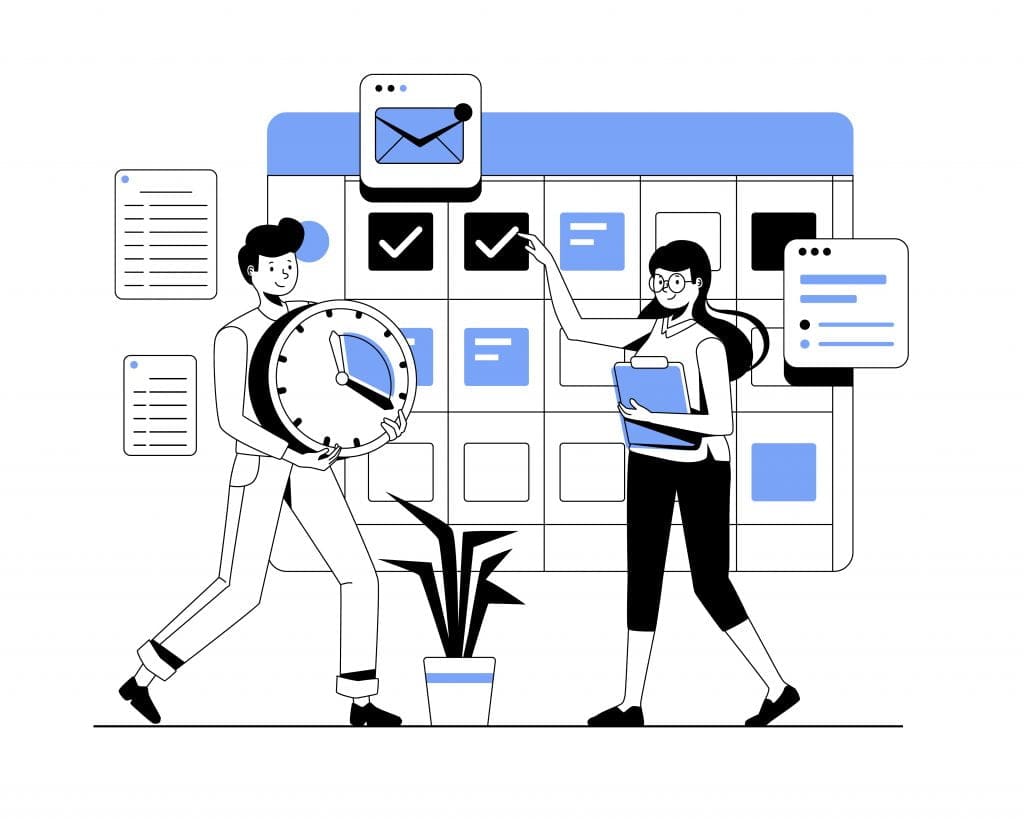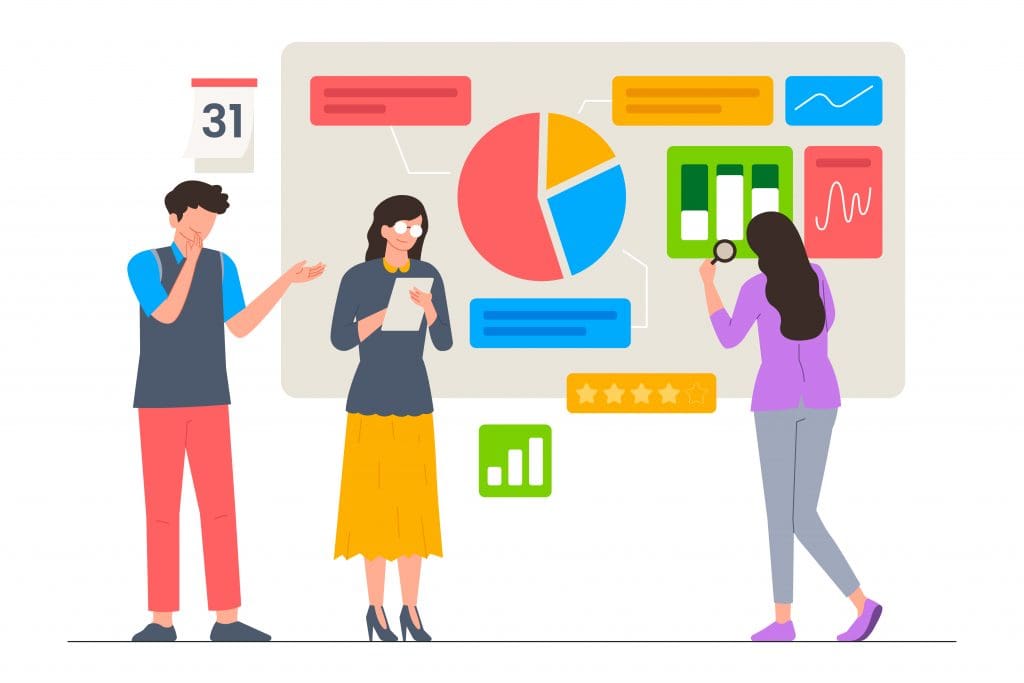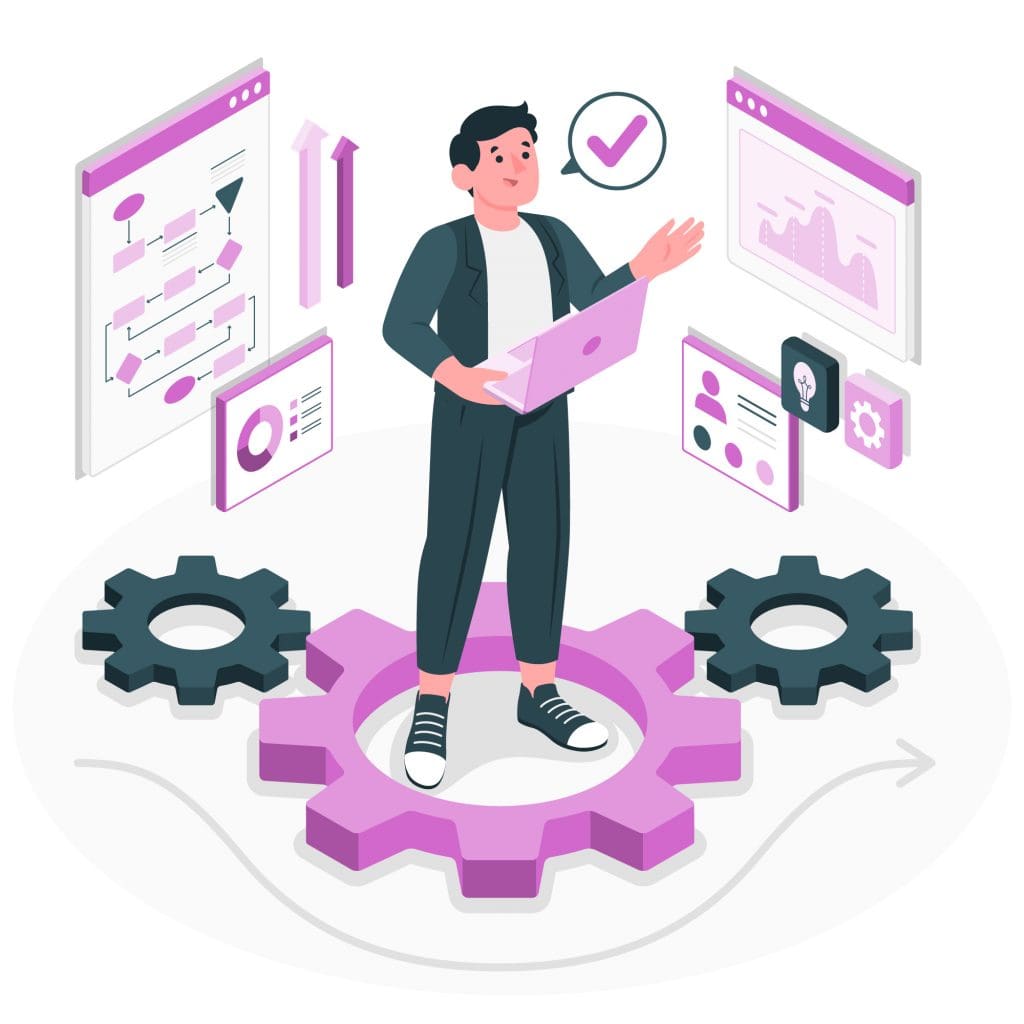Introduction: As a product manager who’s spearheaded several successful SaaS ventures, I understand the gravity of a well-structured development process. SaaS Development not just about coding; it’s an art of aligning technology with business goals and market needs.
A quick glimpse in SaaS Development Strategy:
- Conduct thorough Business Analysis and Discovery.
- Define a clear Vision and Implementation Plan.
- Choose a suitable Pricing Model.
- Engage in detailed Planning and Iteration.
- Develop a focused MVP.
- Pay attention to Application Development specifics.
- Ensure robust Release mechanisms.
- Conduct Beta Testing with real users.
- Create an effective User Onboarding strategy.
- Employ comprehensive Product Marketing tactics.

Step 1: Business Analysis and Discovery My Insight: At the heart of every successful SaaS product lies a thorough business analysis. When I led the development of a project management tool, the initial phase involved deep market research and understanding user pain points. This phase is pivotal for setting the tone of your entire project.
- Business Analysis: This is where the journey begins. Drawing from my experience with the CRM software, the key was to pinpoint exactly what the product would accomplish, its purpose, and its target audience. Understanding the specific challenges and needs of your target market is crucial. For instance, in our CRM project, a detailed analysis led us to a UI/UX design that significantly improved user interaction. Remember, the depth of your analysis can make or break your product’s market fit.
- Product Discovery: Following the footsteps of business analysis, product discovery is about bringing your SaaS vision to life. When developing our SaaS marketplace, the discovery phase involved brainstorming various implementation strategies, including budgeting, timeframe estimation, selecting a suitable business model, and deciding on the technology stack and design. This phase is about exploring possibilities and setting realistic expectations. It’s a melting pot of ideas where every opinion counts, setting the stage for a product that not only meets business objectives but also resonates with your audience.
App Spotlight: Tools like Google Analytics and SEMrush were invaluable for market analysis. Also, platforms like SurveyMonkey helped gather direct user feedback.
Step 2: Vision and Implementation Plan Experience Speaks: Crafting a clear vision and a robust implementation plan is crucial. In my experience with developing a CRM system, aligning our vision with market needs and then setting SMART goals was key to our strategy.
- Vision: This is your SaaS’s North Star. When I was at the helm of developing a CRM software, aligning our vision with our strategic approach was crucial. It’s about setting a clear direction while remaining flexible to user feedback and market trends. Just as a facility management platform we worked with, your vision should drive you towards solutions that resonate with your target audience. It’s about focusing on what truly matters for your users and your business.
- Goals: The importance of setting clear, SMART goals cannot be overstated. In the SaaS marketplace project I managed, we adhered to specific, measurable, achievable, relevant, and time-bound goals. This framework not only kept us on track but also provided a clear metric for success and progress.
- Actions: With a vision and goals set for your SaaS Development, it’s time to act. The actions you take should be in direct alignment with your goals, just like a GPS guiding you to your destination without veering off course. It’s a balancing act of staying true to your vision while navigating the ever-changing SaaS landscape.
App Spotlight: Tools like Trello for project management and Asana for setting and tracking goals were instrumental.

Step 3: Pricing Model Definition From the Field: Determining the right pricing model is a balancing act. For a cloud storage service I worked on, we adopted a tiered pricing model which significantly boosted our customer base.
- Develop a Value-Based Pricing Strategy: This is about aligning your price with the perceived value of your product. Drawing from my experience with the SaaS marketplace, setting a price that reflects the value offered was critical. Users are more willing to pay if they believe the price matches the utility and benefits of the product. It’s a delicate balance, but getting it right can lead to a loyal customer base.
- Adopt a Freemium Pricing Model: The freemium model, which I found particularly effective in the CRM software project, is a powerful tool. It allows users to experience the full capabilities of your product without immediate financial commitment. This approach not only builds trust but also provides users with a tangible understanding of your product’s value, increasing the likelihood of converting them into paying customers.
App Spotlight: Tools like ProfitWell and Price Intelligently provide valuable insights for developing effective pricing strategies.
“In the dynamic landscape of SaaS products, your approach should pivot based on the market’s maturity. For tools in uncharted categories, blitzscaling to an MVP with rapid user feedback loops is key. This approach prioritizes speed and agility, allowing for quick iterations based on user insights. Conversely, in a market with established competitors, the focus should shift to carving out a niche with a strong product-market fit before delving deeper. These distinct scenarios demand different strategies and checklists, underlining the importance of adaptability and market awareness in the SaaS domain.”
Step 4: Planning and Iterating Real-World Application: Adequate planning and continuous iteration form the backbone of SaaS development. When developing an email marketing tool, iterative testing using platforms like JIRA for project management and InVision for prototyping was key.
- Project Planning: The success of a SaaS project hinges on meticulous planning. This is a lesson I learned while managing the development of a CRM software, where setting clear milestones, budgets, and timelines was fundamental. A detailed plan acts as a roadmap, guiding your project through each phase and ensuring that resources are optimally utilized.
- Prototype Iteration: In the scope of SaaS Development, prototyping is more than just a step; it’s a strategy. When developing the SaaS marketplace, iterating prototypes allowed us to explore different features and concepts efficiently. This phase is critical for validating your product idea without committing to full-scale development, thereby reducing the risk of costly reworks later.
App Spotlight: Tools like JIRA for project management and Adobe XD for prototyping were invaluable in these stages.

Step 5: Developing a Minimum Viable Product (MVP) Personal Anecdote: The MVP stage is where you see your vision start to materialize. While working on a health tech app, focusing on core functionalities in the MVP phase helped us refine the product based on early user feedback. To define your MVP, you need to complete four steps:
- Crafting User Personas: Start by profiling your product’s target audience in detail. Establish clear user personas and narratives to guide the MVP’s feature development.
- Clarifying the Core Offering: Focus on defining the MVP’s fundamental features that reflect your initial vision, ensuring it directly addresses key user needs without unnecessary complexity.
- Choosing Effective Delivery Methods: Select the most appropriate platforms and marketing strategies to deliver your product’s value, taking into account your audience’s habits and preferences.
- Fostering Customer Engagement: Incorporate feedback mechanisms within your MVP and actively seek early adopter insights through surveys and interviews to refine your product.
App Spotlight: Using LeanStack for creating lean canvas and Mockplus for rapid prototyping proved effective.
Step 6: Application Development Insider’s View: Choosing the right architecture and tech stack is vital. In a SaaS tool for financial planning I led, opting for a microservices architecture facilitated scalability and maintenance.
- Choosing the Right Architecture: Selecting an appropriate architecture is foundational for your SaaS product. In my experience, particularly with the SaaS marketplace, opting for microservices architecture was a game-changer due to its scalability and flexibility. This approach allows for parallel development streams and easier scaling, as evidenced by its successful application in a property management platform project I consulted on.
- Selecting a Technology Stack: The technology stack is vital as it dictates your product’s functionality and scalability. The choice should align with your product’s value proposition, business requirements, and available resources. In the CRM software project, we carefully chose a tech stack that balanced current needs with future growth potential.
- Assembling the Development Team: The team is the heart of the development process. Options include hiring in-house for complete control or outsourcing for cost-effectiveness and flexibility. In my projects, we often found a hybrid approach effective, combining in-house expertise with outsourced teams for specific tasks or phases of development.
App Spotlight: Tools like GitHub for code management and Slack for team communication were integral in managing these aspects of application development.
Step 7: Release Expert Tip: Don’t overlook cloud infrastructure and CI/CD pipelines. For a SaaS analytics platform I managed, ensuring robust cloud infrastructure and a streamlined CI/CD pipeline was central to our successful launch.
- Develop a Cloud Strategy: A robust cloud infrastructure is non-negotiable for SaaS products. It’s crucial to have distinct environments for development, testing, and production. This separation ensures stability and allows for smooth transitions between different stages of the product lifecycle. From my experience with the CRM software, having a dedicated cloud environment for each phase significantly improved our deployment process.
- Setting Up CI/CD Pipeline: Implementing a Continuous Integration/Continuous Deployment (CI/CD) pipeline is essential for efficient development and release cycles. A CI/CD pipeline automates the testing and deployment process, reducing errors and speeding up release times. Having skilled DevOps personnel to manage this pipeline is crucial, as seen in our SaaS marketplace project, where it played a pivotal role in ensuring seamless product updates and quick bug fixes.
App Spotlight: AWS for cloud infrastructure and Jenkins for CI/CD were our go-to tools.
“As a seasoned product manager and founder, I’ve observed that the checklist for developing a SaaS product varies significantly across different industries and target markets. For instance, the considerations and priorities for a medical SaaS will differ greatly from those of a manufacturing-focused platform. Similarly, the approach for B2B solutions will not mirror the strategies for B2C applications. Understanding these nuances is essential for tailoring development strategies to meet specific industry requirements and customer expectations.”
Step 8: Beta Testing Insider Tip: Beta testing with real users can provide invaluable insights. This was particularly true for an e-commerce SaaS solution I was involved with.
Engaging in Beta Testing with Real Users: In addition to rigorous testing and quality assurance protocols, incorporating beta testing with real users is crucial. This phase involves recruiting a group of users representative of your target market who can interact with your product in a real-world environment. Their feedback is invaluable, offering direct insights into user experience, potential improvements, and overall product appeal. In projects like the CRM software and the SaaS marketplace I managed, beta testing provided actionable feedback that guided significant refinements, ensuring that the final product truly resonated with its intended audience.
App Spotlight: UserTesting.com provided great insights from real users during our beta phase.
Step 9: User Onboarding Expert Advice: A smooth onboarding process is key to user retention. In an educational SaaS product I worked on, integrating interactive guides significantly improved user experience.
- Choosing an Onboarding Strategy: Effective user onboarding is essential for SaaS success. There are two main approaches: self-service, where users independently navigate through guides and tutorials, and white-glove, involving hands-on training and support. The choice depends on your product complexity and user preferences.
- Integrating Onboarding into UI/UX: Whichever strategy you choose, it must be seamlessly integrated into your UI/UX design. This integration ensures that the onboarding process is intuitive and enhances the overall user experience, much like the smoothness of popping air bubbles on bubble wrap.
- Incentivizing Early Adopters: Offering incentives to early adopters can be a strategic move. Though it might seem unconventional, providing small rewards for trial and engagement can significantly boost effort and retention. This approach is grounded in the principle that tangible rewards can motivate behavior more effectively than mere information or persuasion, a concept supported by various behavioral studies.
App Spotlight: Intercom for customer communication and WalkMe for onboarding tutorials were pivotal.
Step 10: Product Marketing From Experience: Diverse and aggressive marketing is essential. Leveraging tools like HubSpot for inbound marketing and Hootsuite for social media management was key in my previous SaaS marketing campaigns.
Utilizing a Full Arsenal of Marketing Tools: For any SaaS product, a comprehensive marketing strategy is non-negotiable. It’s about employing a diverse array of tactics – content marketing to establish thought leadership, Google Ads for targeted outreach, social media for engagement and brand building, and leveraging referrals for trust-building. Each tool serves a specific purpose and, when used collectively, creates a holistic marketing approach that can significantly elevate your product’s visibility and appeal in a competitive market.
App Spotlight:
For marketing your SaaS product effectively, consider integrating the following tools into your strategy:
- Content Marketing: Platforms like HubSpot or WordPress are excellent for managing and publishing content.
- Google Ads: Utilize Google Ads for targeted advertising, reaching potential customers at the right time.
- Social Media Management: Tools like Hootsuite or Buffer can streamline your social media posting and engagement.
- Referral Programs: Use software like ReferralCandy or Ambassador to create and manage referral marketing campaigns.
Endnote: Remember, the SaaS landscape is dynamic. Staying agile and adaptable is just as important as following these steps. Keep innovating, and good luck on your SaaS journey!

